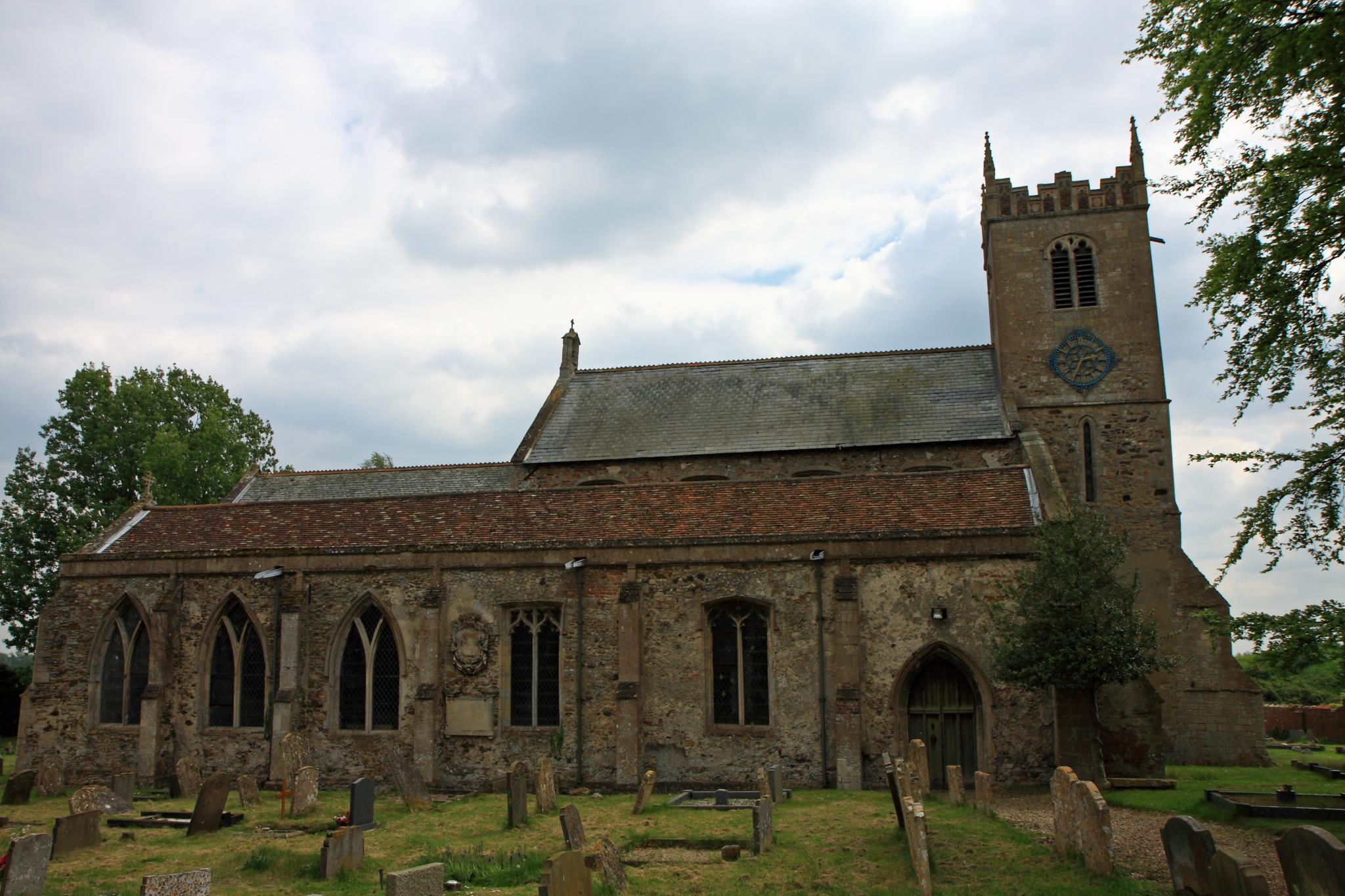St Mary the Virgin
Wiggenhall, Norfolk
Reached along a lane that gradually leaves the trappings of the 21st century behind, this church is on a spit of land between two fenland drains that enter the Great Ouse about half a mile away.

A good vantage point from which to enjoy the setting of this church is the bridge over the Great Ouse.
Wiggenhall St Germans, Norfolk
The wide view of church, river and fens stretches away to the tower of the ruined shell of Wiggenhall St Peter, which can be seen about a mile upstream.
The church itself is full of character, both outside and in. The exterior reflects the varying ages of the building, with a 13th century tower, while most of the body of the church is from the 15th century, and 16th century brick buttresses and a disused brick south porch of the same date.
The inside is famous for its ranks of carved benches. These date from the 15th century and have beautifully carved traceried backs. This detailing alone would make them a treat, but the bench ends put them in the top league of their kind. There are marvellous carved figures on either side of the poppyheads, and the Apostles in niches on the ends of the benches. Among the scenes depicted are vices, such as Lust and Gluttony, literally in the jaws of hell. Less vivid, but equally interesting scenes include a priest blessing a man, and a group of four praying together. There are also animals, some real and some imagined.
Wiggenhall, Norfolk
Reached along a lane that gradually leaves the trappings of the 21st century behind, this church is on a spit of land between two fenland drains that enter the Great Ouse about half a mile away.
Wiggenhall Magdalen, Norfolk
This Wiggenhall is on the banks of the Great Ouse, taking in the fenland landscape and huge skies from the bridges over the river and the parallel drain.
Tilney, Norfolk
With an imposing 13th and 14th century tower topped by a stone spire and corner pinnacles, Tilney's church stands out in its Marshland setting.